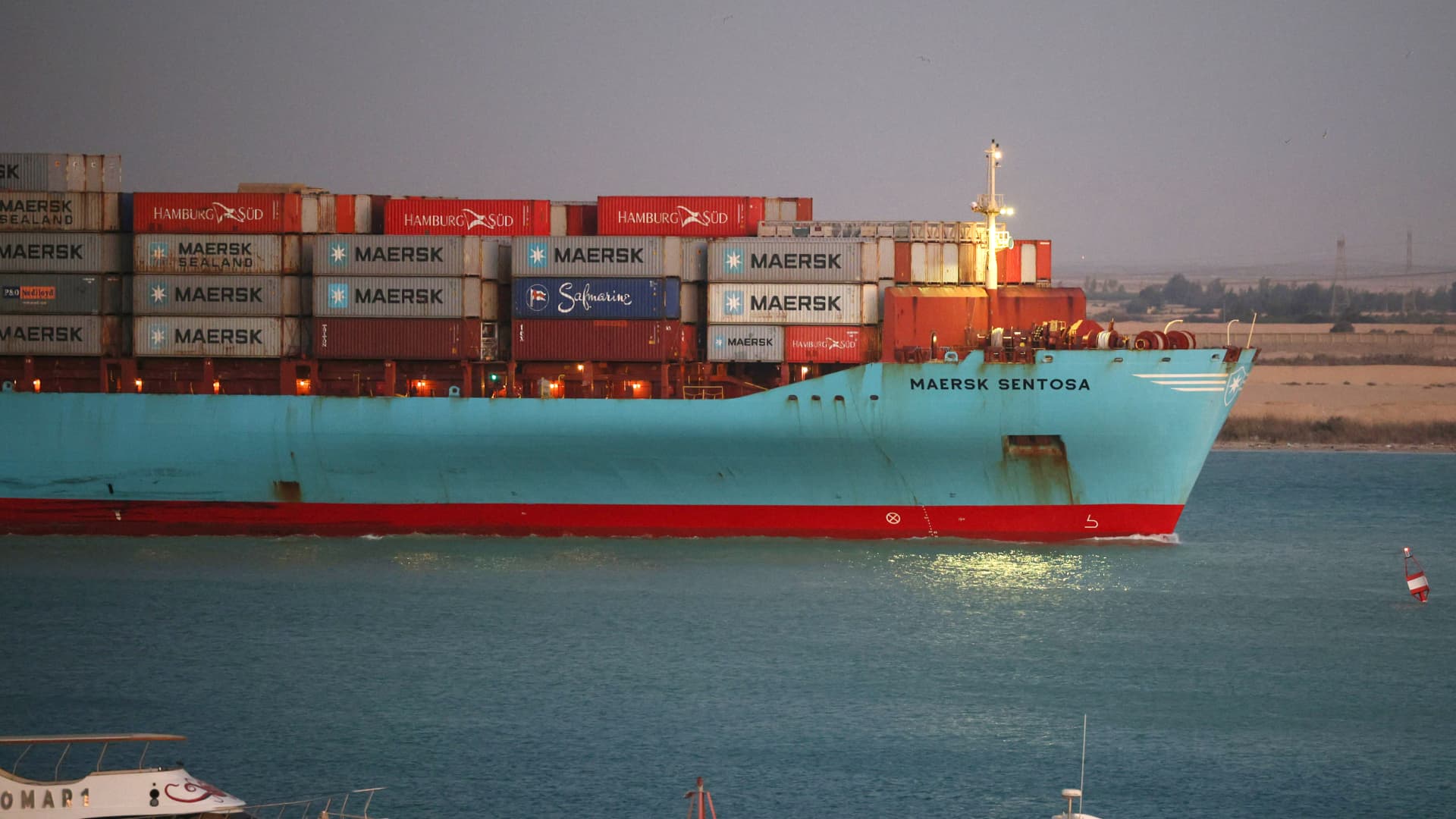The Maersk Sentosa container ship sails southbound to exit the Suez Canal in Suez, Egypt, on Thursday, Dec. 21, 2023.
Stringer | Bloomberg | Getty Images
Vessels transiting the Red Sea have faced attacks over the past several weeks from Yemen-based Houthis, prompting shipping companies to change routes, leading to a spike in freight rates.
Embarking on longer detours around the Cape of Good Hope in South Africa have pushed ocean freight rates by up to $10,000 per 40-foot container, as container ships have diverted more than $200 billion of goods away from the Red Sea waterway to avoid strikes by Houthi militants.
U.S.-owned commercial vessel, the Gibraltar Eagle, was struck by Houthi militants on Monday, the U.S. Central Command said.
Some market watchers expect the disruptions could bring about a reversal in fortunes of an industry that was mired in a recession last year.
“As to the higher rates in 2024, this could add multiple billions to the bottom line of the VOCC even if this lasts for just another two or three weeks,” Alan Baer, CEO of logistics company OL USA, told CNBC in an email.
If this goes on for three to six months the [profits] will again slowly approach 2022 levels.
Vessel-Operating Common Carriers (VOCC) are ocean carriers that own and operate vessels responsible for managing cargo and transporting them. Maersk, Evergreen and COSCO are some prominent VOCCs.
“If this goes on for three to six months the [profits] will again slowly approach 2022 levels as the operating expenses should be lower than what the carriers experienced during the 2021 and 2022 chaos,” Baer said.
Shipping slump of 2023
The global shipping industry has been in a slump, dragged down by high inventories and consumer spending pullback which led to several bankruptcies last year. Before the Red Sea attacks, global shipping container rates had more than halved from 2022, a stark reversal from the boom following the pandemic.
Asia-Europe rates averaged around $1,550/FEU in 2023, but have…
Read the full article here

Leave a Reply